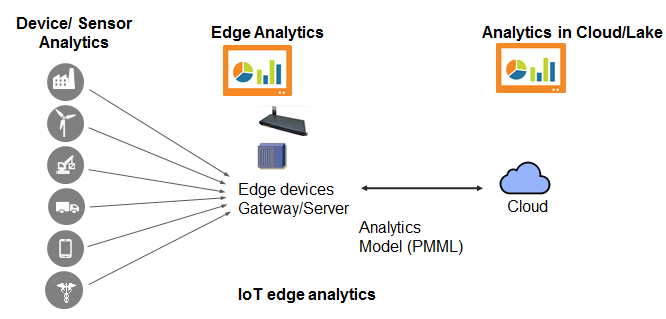Edge Analytics: Revolutionizing Real-Time Data Processing at the Edge
In today’s fast-paced digital landscape, organizations are generating enormous volumes of data every second. Traditional cloud-based analytics, while powerful, often struggles to provide real-time insights due to latency issues and bandwidth limitations. This challenge has given rise to edge analytics, a transformative approach that processes data closer to its source, enabling faster, smarter decision-making. By leveraging computing power at the edge of the network—near IoT devices, sensors, and machinery—edge analytics ensures that critical insights are available instantly, improving operational efficiency and reducing response times.
Source - https://www.marketresearchfuture.com/reports/edge-analytics-market-3192
Edge analytics is particularly impactful in industries where milliseconds matter. For instance, in manufacturing, sensors on production lines can detect equipment anomalies in real-time, allowing predictive maintenance before costly breakdowns occur. Similarly, in autonomous vehicles, edge analytics processes sensor data locally to make split-second decisions, ensuring safety and efficiency without relying solely on cloud communication. This capability not only enhances performance but also reduces the load on centralized servers, lowering operational costs and improving scalability.
One of the key benefits of edge analytics is its ability to support real-time decision-making. Unlike traditional analytics, where data is sent to centralized cloud servers for processing, edge analytics filters, aggregates, and analyzes data locally. This localized processing minimizes latency, enabling organizations to act immediately on critical insights. For example, retail chains can monitor foot traffic and inventory in real-time, dynamically adjusting promotions and stock levels to optimize sales and customer experience. Similarly, healthcare providers can track patient vitals through wearable devices, allowing immediate interventions if anomalies are detected.
In today’s fast-paced digital landscape, organizations are generating enormous volumes of data every second. Traditional cloud-based analytics, while powerful, often struggles to provide real-time insights due to latency issues and bandwidth limitations. This challenge has given rise to edge analytics, a transformative approach that processes data closer to its source, enabling faster, smarter decision-making. By leveraging computing power at the edge of the network—near IoT devices, sensors, and machinery—edge analytics ensures that critical insights are available instantly, improving operational efficiency and reducing response times.
Source - https://www.marketresearchfuture.com/reports/edge-analytics-market-3192
Edge analytics is particularly impactful in industries where milliseconds matter. For instance, in manufacturing, sensors on production lines can detect equipment anomalies in real-time, allowing predictive maintenance before costly breakdowns occur. Similarly, in autonomous vehicles, edge analytics processes sensor data locally to make split-second decisions, ensuring safety and efficiency without relying solely on cloud communication. This capability not only enhances performance but also reduces the load on centralized servers, lowering operational costs and improving scalability.
One of the key benefits of edge analytics is its ability to support real-time decision-making. Unlike traditional analytics, where data is sent to centralized cloud servers for processing, edge analytics filters, aggregates, and analyzes data locally. This localized processing minimizes latency, enabling organizations to act immediately on critical insights. For example, retail chains can monitor foot traffic and inventory in real-time, dynamically adjusting promotions and stock levels to optimize sales and customer experience. Similarly, healthcare providers can track patient vitals through wearable devices, allowing immediate interventions if anomalies are detected.
Edge Analytics: Revolutionizing Real-Time Data Processing at the Edge
In today’s fast-paced digital landscape, organizations are generating enormous volumes of data every second. Traditional cloud-based analytics, while powerful, often struggles to provide real-time insights due to latency issues and bandwidth limitations. This challenge has given rise to edge analytics, a transformative approach that processes data closer to its source, enabling faster, smarter decision-making. By leveraging computing power at the edge of the network—near IoT devices, sensors, and machinery—edge analytics ensures that critical insights are available instantly, improving operational efficiency and reducing response times.
Source - https://www.marketresearchfuture.com/reports/edge-analytics-market-3192
Edge analytics is particularly impactful in industries where milliseconds matter. For instance, in manufacturing, sensors on production lines can detect equipment anomalies in real-time, allowing predictive maintenance before costly breakdowns occur. Similarly, in autonomous vehicles, edge analytics processes sensor data locally to make split-second decisions, ensuring safety and efficiency without relying solely on cloud communication. This capability not only enhances performance but also reduces the load on centralized servers, lowering operational costs and improving scalability.
One of the key benefits of edge analytics is its ability to support real-time decision-making. Unlike traditional analytics, where data is sent to centralized cloud servers for processing, edge analytics filters, aggregates, and analyzes data locally. This localized processing minimizes latency, enabling organizations to act immediately on critical insights. For example, retail chains can monitor foot traffic and inventory in real-time, dynamically adjusting promotions and stock levels to optimize sales and customer experience. Similarly, healthcare providers can track patient vitals through wearable devices, allowing immediate interventions if anomalies are detected.



